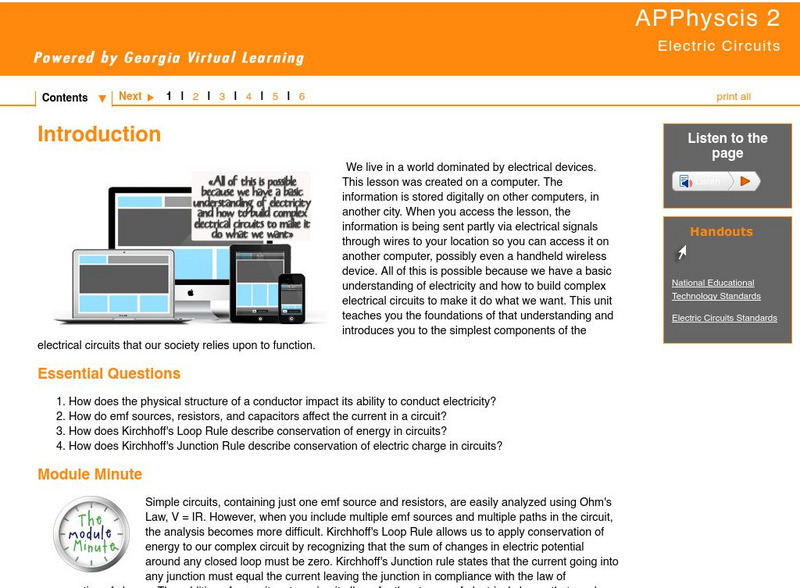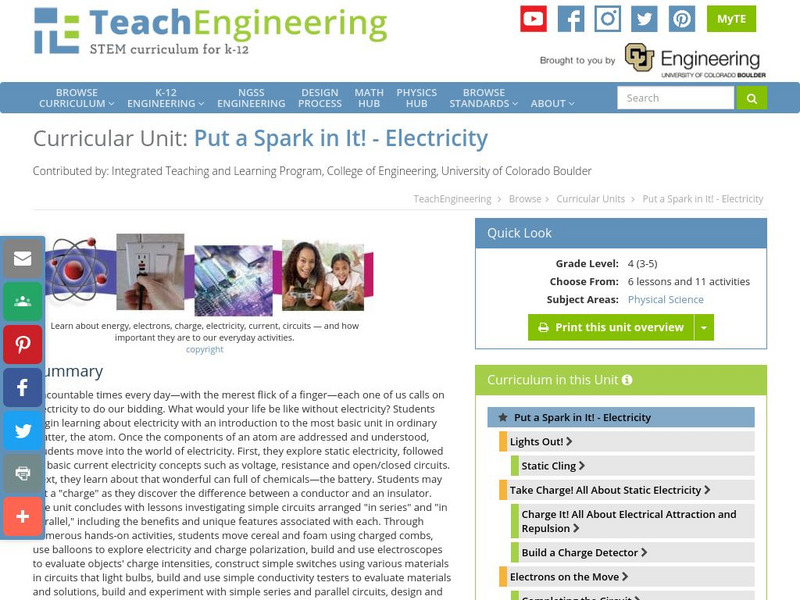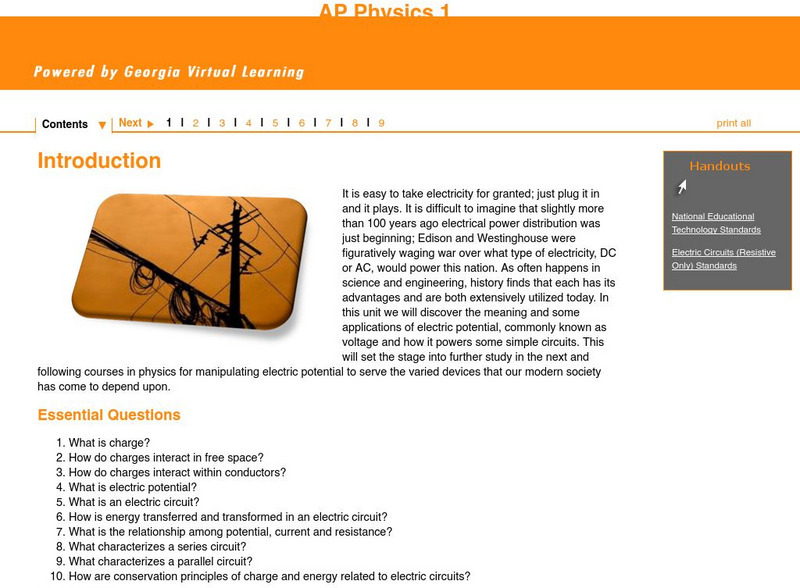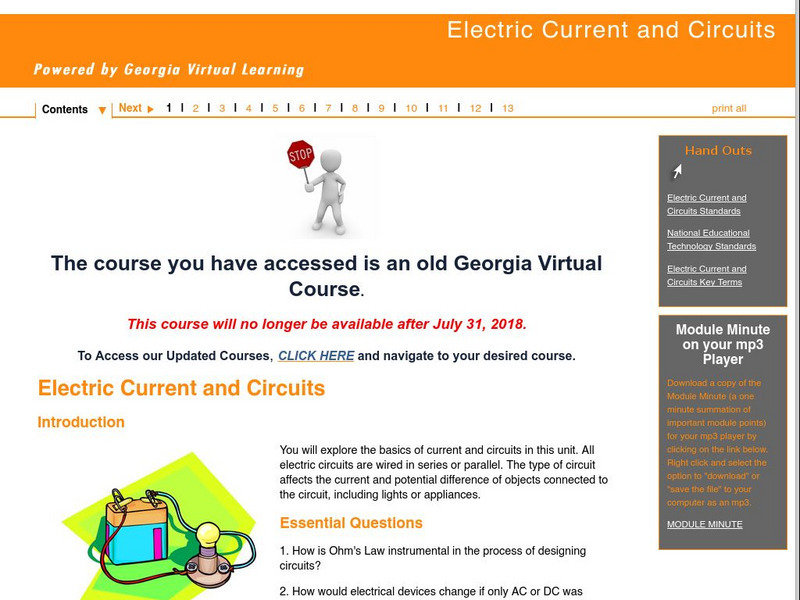Hi, what do you want to do?
Columbus City Schools
It’s Electric!
Shocking! Who knew so many great ideas existed for teaching middle schoolers about electricity? Find them all within this energetic framework. You'll light up at the variety of printable and web-based resources within! After building...
Curated OER
Basic Electric Circuits
Students calculate the resistance across a bank of resistors in a series, parallel and combined circuit. Using new vocabulary words, they define and describe them in a scientific manner. After stating Ohm's Law, they solve electrical...
CK-12 Foundation
Ck 12: Physical Science: Series and Parallel Circuits
[Free Registration/Login may be required to access all resource tools.] What series and parallel circuits are and how they differ.
CK-12 Foundation
Ck 12: Resistors in Series and Parallel
[Free Registration/Login may be required to access all resource tools.] The differences between series and parallel circuits are highlighted. Provides an in-depth look at how to solve problems about circuits and resistors. Includes a...
CK-12 Foundation
Ck 12: Parallel Circuits
[Free Registration/Login may be required to access all resource tools.] In this module, students learn what a parallel circuit is and how it differs from a series circuit.
Physics Classroom
The Physics Classroom: Current Electricity: Combination Circuits
Explains what a combination circuit is, reviews the features of series and parallel circuits, and demonstrates how to analyze combination circuits. Includes detailed examples and some problems for students to try. There is also a link to...
CK-12 Foundation
Ck 12: Combined Series Parallel Circuits
[Free Registration/Login may be required to access all resource tools.] Presents methods for solving electrical circuit problems where there is a combination of series and parallel circuit features.
Physics Classroom
The Physics Classroom: Electric Circuits: Circuit Connections: Parallel Circuits
When two or more electrical devices in a circuit are connected, it is known as a series connection or a parallel connection. When all the devices are connected using parallel connections, the circuit is referred to as a parallel circuit....
CK-12 Foundation
Ck 12: Parallel Circuits
[Free Registration/Login may be required to access all resource tools.] In this lesson, students learn about parallel circuit design, and how to calculate equivalent resistance from resistors in a parallel circuit.
Georgia Department of Education
Ga Virtual Learning: Ap Physics 2: Electric Circuits
This unit teaches students the foundations of electrical circuits and introduces them to their simplest components. Covers series and parallel circuits, Kirchhoff's Rules, Ohm's Law, RC circuits, resistivity, and capacitance.
TeachEngineering
Teach Engineering: Put a Spark in It! Electricity
Uncountable times every day "with the merest flick of a finger"each one of us calls on electricity to do our bidding. What would your life be like without electricity? Students begin learning about electricity with an introduction to the...
Georgia Department of Education
Ga Virtual Learning: Steady State Direct Current With Batteries & Resistors Only
In this interactive tutorial, students will analyze series circuits and parallel circuits along with complex circuits composed of elements in series and parallel. Learners will use schematics to help them understand these circuits....
Physics Classroom
The Physics Classroom: Current Electricity: Circuit Connections: Series Circuits
When two or more electrical devices in a circuit can be connected, it is considered a series connection or a parallel connection. When all the devices are connected using series connections, the circuit is referred to as a series...
Georgia Department of Education
Ga Virtual Learning: Ap Physics 1: Electric Circuits
In this unit students discover the meaning and some applications of electric potential, commonly known as voltage, and how it powers some simple circuits.
Georgia Department of Education
Ga Virtual Learning: Electric Current and Circuits
Students have the opportunity to explore the basics of current and circuits in this online module. Some of the activities include interactive animations, informational text, practice problems, and lab experiments.
Utah State Office of Education
Utah Science: The Mysterious Force
There is a secret mysterious force in your home right this very moment! Try these activities to first identify that force and then extend your knowledge of the force by investigating the other activities provided.

















